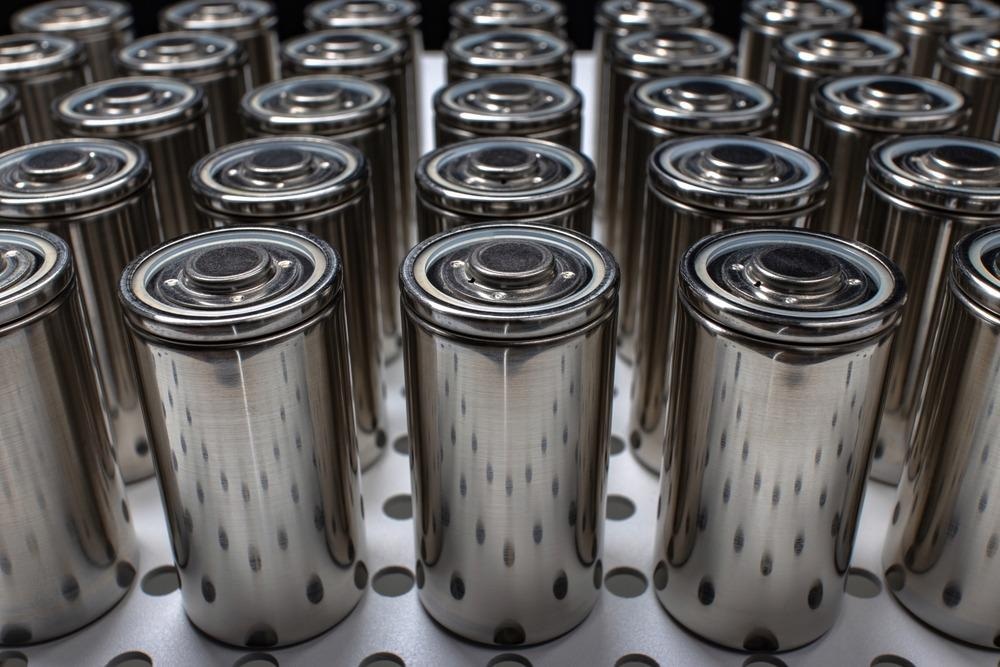Due to their great safety, potassium-ion batteries (PIBs) have sparked substantial attention as a possible next-generation energy storage solution. A recent review paper published in the journal Materials Today describes current research advances and accomplishments of 1D nanostructured materials in PIBs, with a particular emphasis on the production and use of anode and cathode materials.

Study: Advances and perspectives on one-dimensional nanostructure electrode materials for potassium-ion batteries. Image Credit:Troggt/Shutterstock.com
Potassium-ion Batteries: The Future of Energy Storage Systems
Because of their remarkable energy density, extended lifetime, and eco-friendliness, lithium-ion batteries (LIBs) have witnessed tremendous demand for the fast development of electric cars, communications systems, and portable devices. However, because of limited lithium supplies and unequal worldwide dispersion, prices will inevitably rise, impeding future utilization of LIBs.
Due to the natural availability of potassium resources and the comparable physical and chemical features of potassium and lithium batteries, potassium-ion batteries (PIBs) have lately surfaced as a possible replacement for LIBs in large-scale fuel cell applications.
However, this novel energy storage system is currently in its early stages and has experienced some challenges. The difficulties stem mostly from the enormous atomic radius of potassium ions, which significantly reduces diffusion rates. As a result, the creation of high-efficiency electrode materials is critical for increasing the utility of PIBs.
Enhancing PIBs’ Performance with 1D Nanostructured Electrode Materials
Nanostructured one-dimensional (1D) electrode nanomaterials can efficiently reduce ionic diffusion paths, boost electrolyte–electrode interface area, and minimize volume changes, considerably improving PIB electrochemical properties.
Nanowires, nanosheets, carbon nanotubes, nanofibers, and nanodots have received special consideration due to their unique features among the different 1D nanostructures.
1D ultra-long nanomaterials have the inherent advantage of being constructed into linked networks, which may be used to create a standalone extensible electrode. The standalone electrode may be used as the functional electrode material in PIBs immediately and easily.
1D Nanostructured Cathode and Anode Materials
Stacked transition metallic oxides, polymeric molecules, Prussian blue, and related organic derivatives are the most often identified cathode compounds for PIBs. However, work on 1D nanomaterials in cathodes is quite limited. Only vanadium-based compounds, manganese oxides, and binary metallic multilayer oxide cathode materials were found to include 1D nanostructures.
However, the study and use of 1D nanomaterials in anode substances are quite wide and detailed. Graphene, non-graphite carbon, metallic sulfides, selenides, oxides, and different composites are the most used anode materials for PIBs.
Characterization Methods for 1D Nanostructured Materials
Comprehensive characterization is required to uncover the reaction kinetics and the morphological characteristics of electrodes. Ex-situ analysis cannot properly analyze the reaction kinetics during the electrolytic operations in advanced fuel cells.
In-situ characterization allows for real-time monitoring of electrode substances in their original place, providing more comprehensive and in-depth information into the phase transformation and structural variation mechanisms of electrodes. 1D nanomaterials offer an effective and simple environment for in-situ characterization.
In-situ transmission electron microscopy (TEM), X-ray diffraction (XRD), and Raman test procedures are some of the key in-situ characterization methods used to investigate 1D nanostructured electrode materials of PIBs.
Future Prospects and Limitations to Be Resolved
1D nanomaterials have a vast electrode-electrolyte area of contact due to their large surface area, which can speed up the electrolytic process. This benefit, however, has become a problem for 1D nanostructures as a primary driver of secondary reactions among the electrode and electrolytes, resulting in poor coulombic efficiency and potential fading.
This problem is not limited to the 1D nano-electrode materials of PIBs, but it is likewise a barrier for other battery storage systems. Fine-tuning the porosity and volume of 1D nanomaterials, as well as developing hierarchical heterostructures, may provide an effective solution to this fundamental issue.
Overall, the research on 1D nanostructured electrode substances in PIBs is currently in its early stages. As a result, solutions that link basic research and practical applications are required.
At the moment, most work on 1D nanoscale materials is focused on electrodes. However, PIB studies should also concentrate on balancing and managing the essential factors of the energy storage system concerning the mechanical layout of the cathodes and anodes.
While there are certainly several issues with 1D nanostructured electrode materials, significant advances in recent times provide tremendous optimism for their industrial usage in the coming years.
Reference
Xiao, Z. et al. (2022). Advances and perspectives on one-dimensional nanostructure electrode materials for potassium-ion batteries. Materials Today. Available at: https://www.sciencedirect.com/science/article/pii/S1369702122001183?via%3Dihub
Disclaimer: The views expressed here are those of the author expressed in their private capacity and do not necessarily represent the views of AZoM.com Limited T/A AZoNetwork the owner and operator of this website. This disclaimer forms part of the Terms and conditions of use of this website.